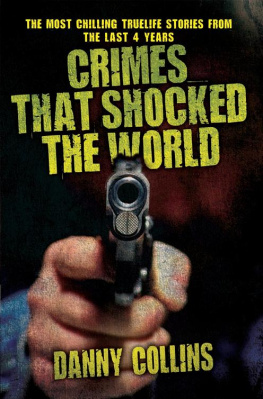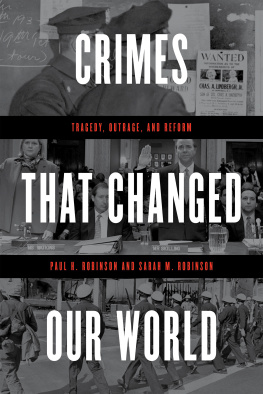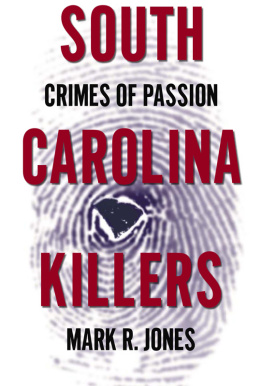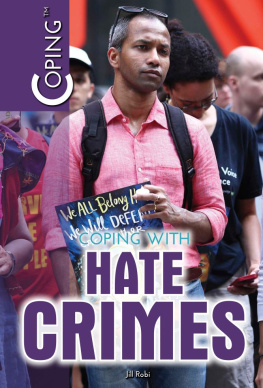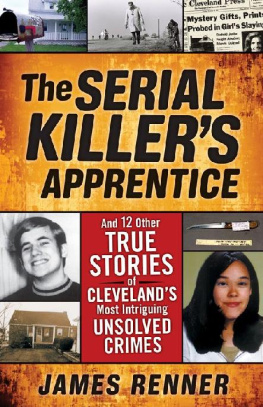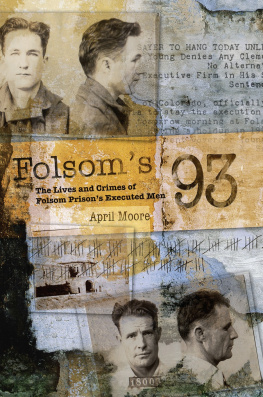D espite its title, this book is not written to shock. It comprises the stories of crimes some hideous and repellent, some breathtakingly audacious that have caused the world to pause and take a breath. All were committed within the last 40 years. Some may be fresh in the readers memory, others may be less well-known, but somewhere, somehow, they made an impact.
In collecting material for this book I studied some unpleasant reports that caused me to seriously reflect on the depth of mans inhumanity to man. The access to these documents, many of which are kept from the public eye in police and security department vaults, was given generously and I thank those authorities for their cooperation. Other sources include police officers, members of the public, colleagues, witnesses to crimes, and the victims themselves. I thank them all. And special thanks to Mrs Jackie Tipping of Hendersen, Nevada, USA, who supplied me with cuttings on the Manson Family and the Sharon Tate and La Bianca murders which she thought might be of interest to me. They were.
As ever, my thanks are also extended to my friends at my publishers, John Blake of London, and the support and advice shown by my indefatigable book editor, John Wordsworth.
My final words of gratitude go to my beautiful wife, Nikki, who reads my manuscripts before tactfully pointing out my more obvious mistakes with a serious expression although Im sure she laughs when she leaves the room and keeps me supplied with Earl Grey tea. The research and any interpretation of the facts are mine. With that said, I must accept all responsibility for any mistakes in the text. They are mine and mine alone, although with respect I would ask you not to shoot the messenger.
W hen writing of my investigation into the disappearance of Madeleine McCann in Portugal in 2006 (Vanished The Truth About the Disappearance of Madeleine McCann, John Blake, 2007) I remarked that the genre of true crime writing must, by its very nature, take as its research material the heartbreak and misery inflicted on the victims and family of those involved in the crime whether as those left with a bitter memory at the loss of a loved one or the shame of a relationship to the perpetrator. That is an unassailable truth.
Each crime brings its own particular horror to the victim and his or her family. A mugging, a burglary or a violent beating are all crimes that leave their mark, physically and mentally, on the victims psyche. Yet there are crimes that go far beyond the limit of human tolerance and understanding and in so doing scar the psyche of all those who hear of them. Such a crime was that committed by Charles Mansons deranged hippie Family when, in 1969, on his instructions, they broke into a house in Benedict Canyon in the Los Angeles hills and slaughtered five people in a hideous blood bath, even cutting an eight-and-a-half month foetus from the body of victim Sharon Tate, wife of film director Roman Polanski, as she was dangled from a beam across the ceiling. Tate was stabbed many times.
Other victims of that horrific murder spree either shot or stabbed that night were Abigail Folger, heiress to a coffee fortune, celebrity hairstylist Jay Sebring, Polish film director Voitek Frykowski, and 18-year-old Steve Parent, a friend of the house caretaker. Polanski was away in Europe at the time.
On the front door of the house, written in the victims blood, were the words: Death to Pigs. The next night, wealthy grocer Leno La Bianca and his wife Rosemary, both in their forties, were found stabbed to death in their home across town. A killer had carved the word War on Leno La Biancas body. The words Helter Skelter were written in blood on the refrigerator.
The Manson crimes are probably among the first that come to mind when one is asked to name the most shocking crime in memory but mankind is so evil that no one act can hold such a title for long. The Manson murders were committed 40 years ago and the horrors are all but lost in the fog of time. Today the crimes are weirder, the execution more horrific, the motives more incomprehensible.
* A two-year-old toddler, beaten with bricks and an iron bar, savaged and left lifeless on a railway track;
* The brutalisation and multiple dual rape of a young couple caught up in a vicious carjacking;
* A depraved killer who sets light to the naked bodies of his schoolgirl victims in a woodland ditch and then joins his victims parents in the search for the missing girls;
* An Austrian father, obsessed with Nazism, who locks his daughter in a hidden cellar for 24 years, raping his prisoner and disposing of the corpse of one unhealthy issue of his incest by thrusting the body of the one-month-old baby into a furnace in horrific parody of his admired Nazi forbears;
* A serial rapist who suffocates a 15-year-old schoolgirl before the eyes of her schoolfriends who cower away in the darkness as he submits the victim to his lust;
* A murderer who rapes the cold corpses of his victims.
These are all crimes that the human mind reels to accept. They are crimes that defy imagination, that speak of a depravity beyond reason, of such depravity that the world must take note. These are the crimes that almost daily shock our world.
Walton, Liverpool, England, 12 February 1993
Cmon baby, were going to have some fun
John Venables to James Bulger.
T here is, in every man and woman on this planet, the capacity for violence hot and unforgiving when our security or that of our loved ones is breached. But what possesses the cold-blooded killer, he or she who can be moved to commit murder without apparent motive other than an assumed blood lust? What can have moved two ten-year -old boys, no more than children themselves, to lure a younger child from its mothers side and take it to a secluded spot, there to wreak the most horrible violence upon the young body until life was extinguished and then to leave the abused and battered corpse across railway lines in the hope that a passing train would further destroy the body and free the killers of suspicion?
Whereas no one could reasonably deny that Charles Darwin had something when he sat among giant tortoises on the Galapagos Islands and developed his theory of the survival of the fittest, just what being the fittest to survive indicates in this cruel world leaves us much to think about. The obvious, one assumes, is physical strength matched with intelligence in all its varying degrees, but one cannot deny that showing a hint of usefulness or attractiveness to the would-be aggressor must have saved a potential victim on countless occasions.
New-born and very young creatures are certainly not strong enough to fight off an aggressor, therefore they must rely on cuteness and charm to save the day. Puppies are endearing, kittens are cuddly, and children are loveable. All bring out a sense of protectiveness in those around them. Very few men or women would wilfully harm an animal or child without deep moral self recrimination. And yet it happens. Mothers stand by while their drunken boyfriend assaults their child, often with fatal results. Children tie tin cans to a cats tail and enjoy the animals frantic efforts to free itself. There is in man a deep, sadistic streak.
Yet sadism in itself has a purpose. It is about domination, self-gratification, and a desire to humiliate. Such motives were evident in the murder of three-year-old James Bulger in a Liverpool suburb in 1993, and the same motives reverberate through every other horrific crime of torture and murder reported in this book. Yet the case of James Bulger reflects a deeper horror in that it was committed by two ten-year-old boys. Animals (if animals will forgive us the description)? Unhinged individuals beyond the salvation offered by Britains overly moral judicial system? The reader must judge.

